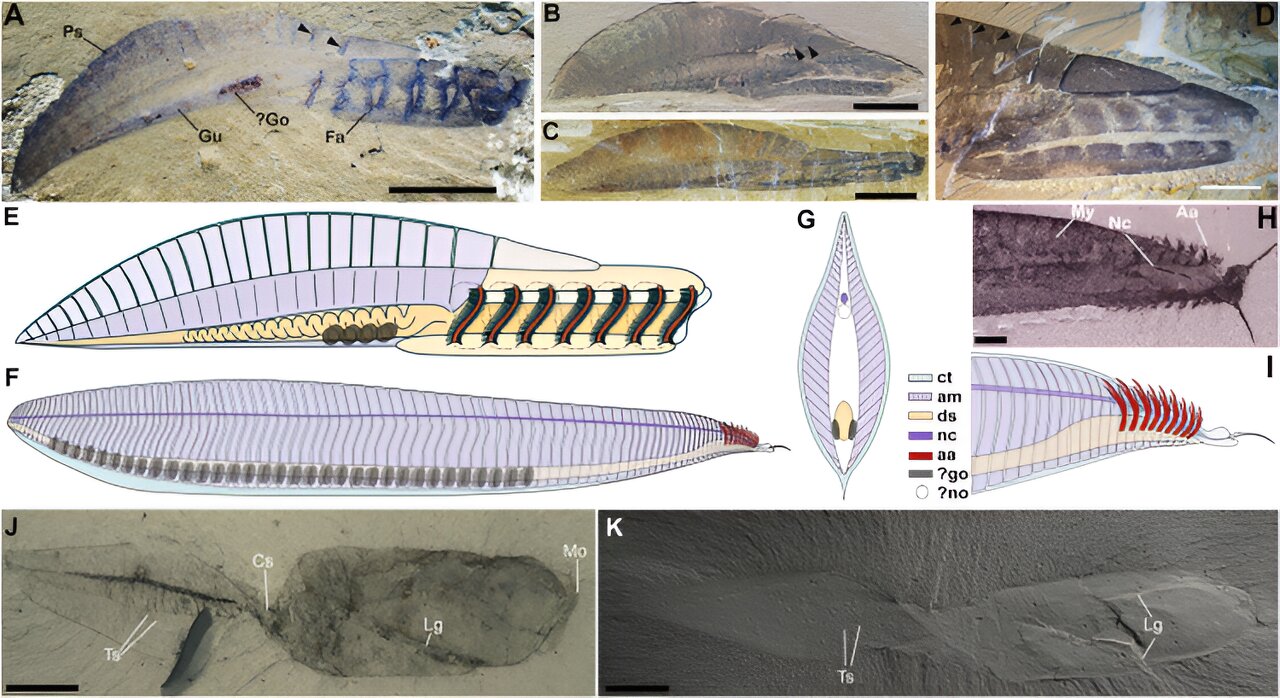
New Research Sheds Light on Ancient Sea Creature Pikaia: A Precursor to Vertebrates?
A team of researchers has reexamined the fossilized remains of an ancient sea creature called Pikaia, which was first discovered in 1910. The findings suggest that prior studies had the creature upside down, leading to a new interpretation of its morphology and potential role as a precursor to vertebrates.
Background Information
Pikaia is believed to have lived approximately 508 million years ago during the Cambrian period. It was previously thought to be an ancient type of worm due to its long, ribbon-like shape and short appendages at the front end. However, a closer examination of its fossilized remains has revealed new insights.
New Discoveries
The research team identified several key features in Pikaia's fossil that challenge previous interpretations. They found that what was previously believed to be a blood vessel along the bottom of the creature was actually a dorsal nerve cord, which would have been located on top of the creature. This discovery supports the theory that Pikaia is an unambiguous stem-group chordate and provides evidence for a chordate stem lineage.
Additionally, they found that what had been described as a dorsal organ on Pikaia's belly was more likely to be a gill outgrowth, extending upward. This finding further supports the idea that Pikaia is an early precursor to vertebrates.
Implications and Future Research
These new findings have significant implications for our understanding of early animal evolution and the origins of the chordate body plan. The researchers suggest that this discovery could help resolve long-standing debates about the classification of Pikaia and its relationship to other early animals, such as Yunnanozoon and vetulicolians.
Further research is needed to explore these findings in more detail and to better understand the evolutionary processes that led to the development of backbones and brains in early vertebrates. The team plans to continue their investigation by studying additional fossils from this time period and using advanced imaging techniques to gain a clearer picture of these ancient creatures.

